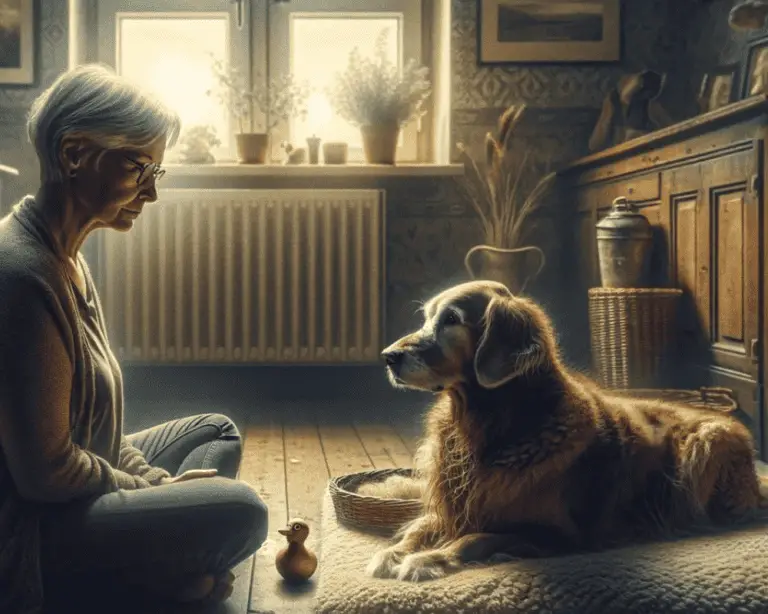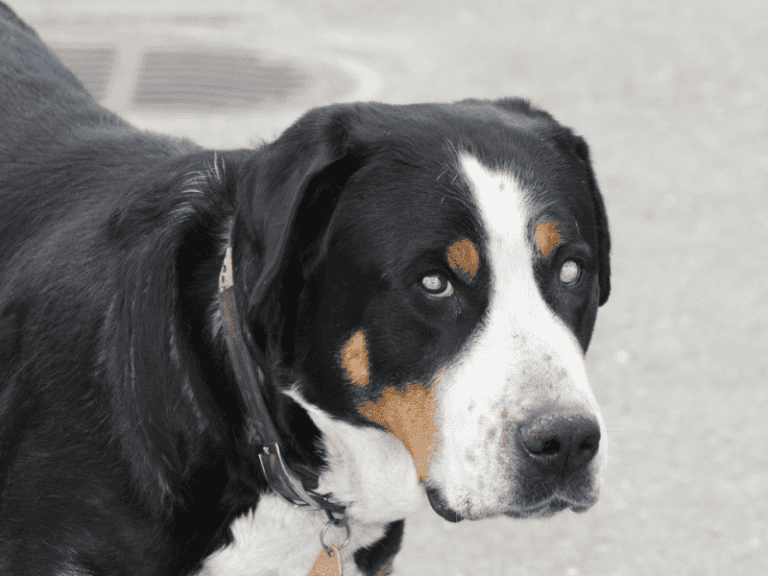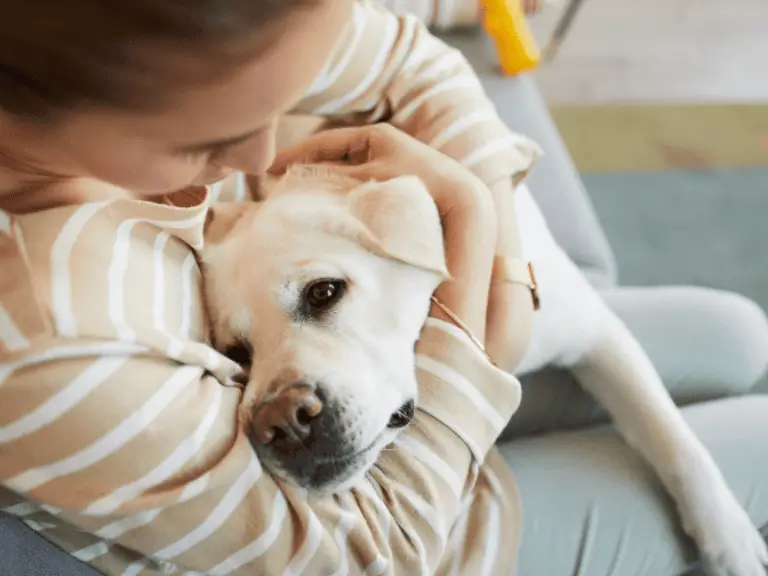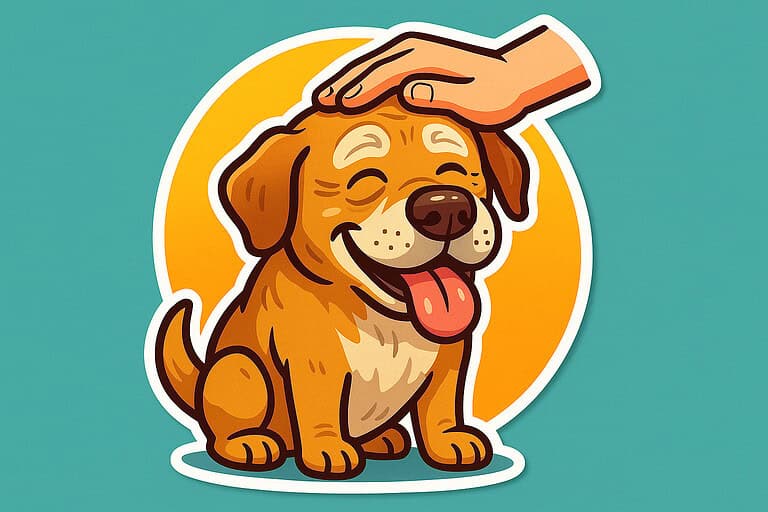6 Common Stress Triggers in Senior Dogs – and How to Avoid Them
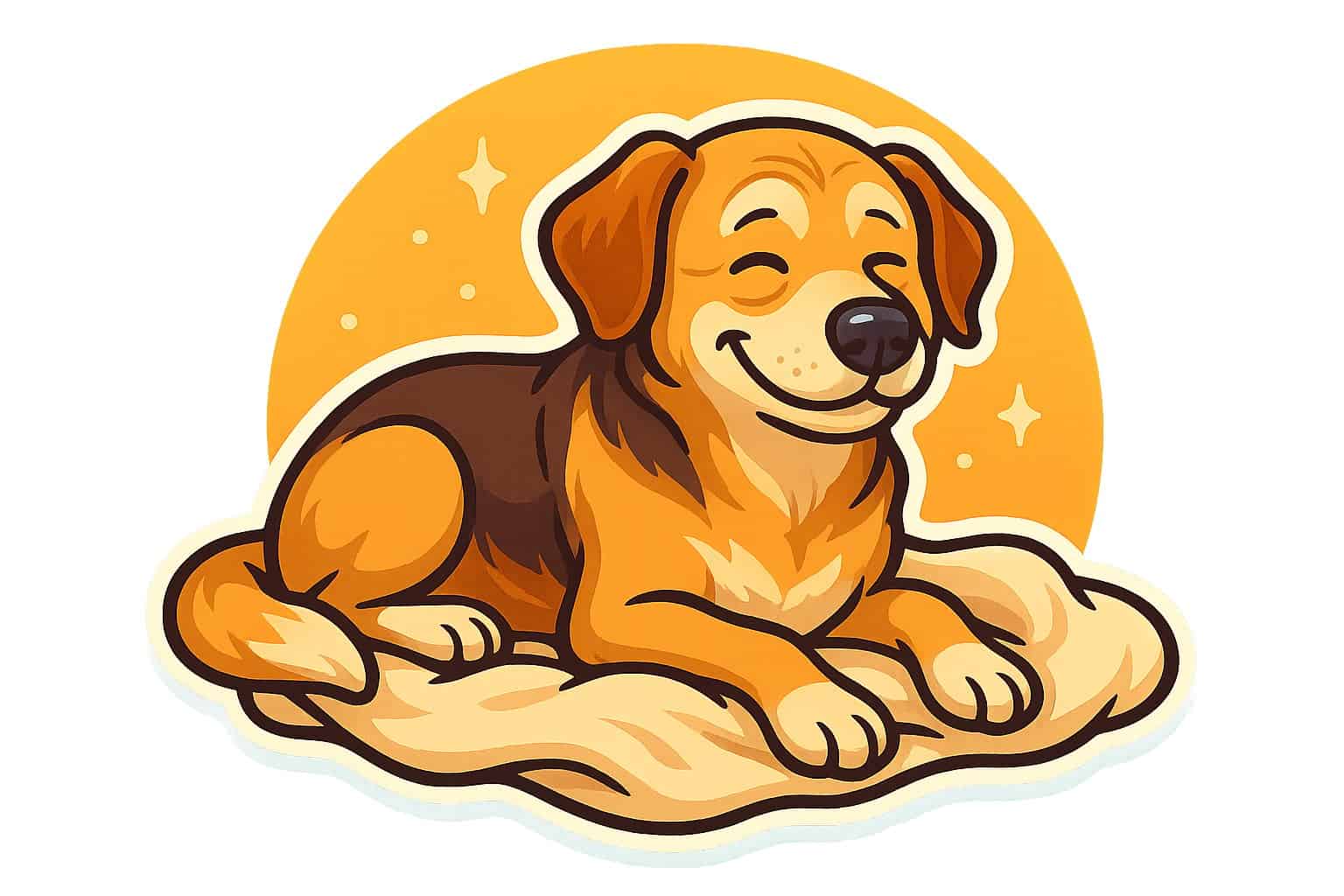
As your dog grows older, you might notice they seem more anxious or stressed than before. Maybe your once-confident companion now startles at sounds they used to ignore.
Perhaps they follow you around the house more than usual. You’re not imagining it—senior dogs really do experience stress differently than younger pups.
The good news is that most stress triggers are manageable once you know what to look for. From changes in their senses to shifts in routine, there are specific reasons why your senior dog might feel overwhelmed.
You can help your dog feel more secure with some practical changes. Let’s dig into the most common triggers and what you can do about them.
1) Separation Anxiety: Why your older dog might panic when alone and how to ease it
Maybe you’ve noticed your senior dog acting differently when you leave. They might whine, pace, or even destroy things while you’re gone.
This is separation anxiety, and it’s surprisingly common in older dogs. Your furry friend may feel more vulnerable as they age, making them cling to you more than before.
Physical changes play a role too. Your dog’s hearing or vision might be declining, making the world feel scarier when you’re not around.
If your dog pants heavily, scratches at doors, or has accidents indoors while you’re away, these are classic signs of separation anxiety.
Start with small departures. Leave for just five minutes, then gradually increase the time.
This helps your dog learn that you always come back. Create a safe space with their favorite blanket and toys.
Consider leaving a piece of your clothing nearby—your scent can be incredibly comforting. Practice calm departures and arrivals.
Don’t make a big fuss when leaving or returning, as this can ramp up their stress. Some dogs benefit from puzzle toys or special treats that only come out when you leave.
This creates positive associations with alone time. It might take a while, but most dogs adjust.
2) Loud Noises: How fireworks or storms stress seniors and creating a safe quiet zone
Your senior dog’s ears have become more sensitive over the years. Those booming fireworks or rumbling thunderstorms that didn’t bother them before can now cause real panic.
Have you noticed your older dog shaking during storms? As dogs age, their ability to cope with sudden loud noises weakens.
Their hearing may be damaged, making certain sounds more jarring and uncomfortable. Fireworks can reach 150 decibels—that’s incredibly loud for sensitive senior ears.
Your dog might pace, pant heavily, or try to hide under furniture when these sounds start. Creating a quiet safe zone works wonders for stressed seniors.
Pick a room away from windows where outside noise is muffled. Add soft blankets and their favorite toys to make it cozy.
You can also try playing calming music or white noise to mask the scary sounds outside. Some dogs feel safer in small spaces like bathrooms or closets during loud events.
If storms or fireworks are predicted, get your safe zone ready early. Move your senior dog there before the noise starts, not after they’re already panicked.
3) Changes in Routine: How sudden schedule shifts upset your dog and maintaining consistency
Senior dogs rely on their daily routine more than you might think. Just like many older people, your aging pup finds comfort in knowing what comes next.
When you suddenly change their schedule, it can feel overwhelming for them. Maybe you started working from home, or your kids went back to school.
Your dog notices these shifts immediately. Does your senior dog seem anxious when you break their usual pattern?
They might pace, whine, or even have accidents in the house. The key is making changes slowly.
If you need to adjust their dinner time, shift it by just 15 minutes each day until you reach the new schedule. Keep their most important routines the same when possible.
Try to walk them at the same times and maintain their bedtime ritual. Your senior dog’s brain doesn’t adapt to change as quickly as it once did.
Give them extra patience during transitions. Small changes feel less scary to them.
Think of it like adjusting to a new prescription for glasses—you need time to get comfortable.
4) New Environments: Why moving or visitors overwhelm your dog and gradual introductions
Have you ever watched your senior dog freeze at the doorway when relatives visit? New environments hit older dogs harder than you might think.
Your senior dog’s world revolves around familiar smells, sounds, and routines. When strangers enter your home or you move to a new place, everything changes at once.
This sensory overload can feel overwhelming. Think of it like walking into a foreign country where you don’t speak the language.
Your dog experiences something similar with new environments. Moving creates the biggest challenge.
Every room smells different. The layout confuses them.
Even confident dogs can become anxious or withdrawn for weeks. Visitors bring their own stress triggers.
New voices, unfamiliar scents on clothing, and different energy levels all demand your dog’s attention. Start gradual introductions before changes happen.
If you’re moving, bring your dog to visit the new home several times first. Let them explore one room at a time.
For visitors, ask guests to ignore your dog at first. Let your senior approach them when ready.
Keep visits short at first. Most dogs adjust within a few weeks to months.
Your patience during this transition makes all the difference.
5) Poor Sleep Quality: How restless nights trigger anxiety and improving bedtime comfort
Have you noticed your senior dog tossing and turning at night? Poor sleep creates a vicious cycle in older dogs.
When your dog can’t get quality rest, anxiety levels rise during the day. Restless nights often lead to confusion and irritability.
Your dog might seem more stressed or clingy than usual. This happens because tired dogs struggle to cope with daily situations.
Senior dogs naturally experience changes in their sleep patterns. They might wake up more often or have trouble falling back asleep.
Pain, cognitive changes, or simple discomfort can all disrupt their rest. Creating a cozy sleep environment helps break this cycle.
Try placing your dog’s bed away from high-traffic areas. Soft bedding that supports achy joints makes a huge difference.
Keep nighttime routines consistent. Dogs feel more secure when they know what to expect.
A gentle evening walk followed by the same bedtime ritual works wonders. Consider a nightlight if your dog seems confused in the dark.
Some senior dogs develop poor night vision. A dim light helps them navigate without fully waking up.
If sleep problems persist, talk to your vet. Sometimes medication or supplements can improve sleep quality and reduce nighttime anxiety.
Maybe you’ve noticed your older pup seems more anxious after starting a new heart medication. Or perhaps they’re restless after beginning pain management drugs.
Common medication side effects in senior dogs include nausea, dizziness, increased anxiety, or changes in appetite. These reactions can make your dog feel uncomfortable and stressed.
Your dog can’t tell you they’re feeling off, so watch for behavioral changes. Are they hiding more often? Panting when it’s not hot?
These could be signs of medication-related stress. Don’t stop medications on your own.
Instead, keep a simple diary of what you notice. Write down when symptoms happen and how severe they seem.
Schedule a chat with your vet about your concerns. They might adjust the dosage, switch to a different medication, or suggest ways to reduce side effects.
Finding the right medication balance takes time. Your patience and careful observation help ensure your senior dog gets the relief they need without unnecessary stress.
6) Lack of Exercise: How too little activity ramps up anxious energy and gentle daily walks
Have you noticed your senior dog becoming more restless or anxious lately? The culprit might be simpler than you think—not enough exercise.
Just like us, dogs need regular activity to feel balanced and calm. When your older pup doesn’t get enough movement, all that pent-up energy has nowhere to go except into worry and stress.
Senior dogs still crave physical activity, even if they can’t handle the marathon hikes of their younger years. Their bodies may move slower, but their minds still need the mental stimulation that comes from exploring the world.
A gentle daily walk works wonders for anxious energy. You don’t need to trek for miles—even 15-20 minutes around the block can make a huge difference in your dog’s mood.
Maybe you’ve seen this yourself: after a nice walk, your dog seems more settled and content. That’s because exercise releases those feel-good chemicals that naturally reduce stress and anxiety.
If mobility is an issue, try shorter but more frequent outings. Two 10-minute walks beat one exhausting 30-minute marathon for most senior dogs.
Why Do Senior Dogs Experience More Stress?
Your older dog’s stress isn’t just in your head—real physical and mental changes happen as they age. These changes make everyday situations feel more overwhelming than they used to.
Aging Changes: What’s Going On Inside Your Dog
Think of your senior dog’s brain like an old computer that’s starting to slow down. The connections aren’t as sharp as they once were.
Cognitive decline is one of the biggest culprits behind senior dog stress. Your dog might forget where their food bowl is or get confused about familiar routines.
This mental fog creates anxiety because nothing feels predictable anymore. Physical changes pile on top of mental ones.
Maybe your dog can’t hear you calling their name anymore, or their vision is getting cloudy. When you can’t see or hear clearly, the world becomes a scarier place.
Pain from arthritis or other age-related conditions makes everything harder. Your dog might feel anxious about jumping on the couch because it hurts, even though they’ve done it thousands of times before.
Common Triggers in Older Pups: Why the Fuss?
Your senior dog’s stress triggers might surprise you. Things that never bothered them before suddenly become major problems.
Separation anxiety often gets worse with age. Your dog knows they’re not as strong as they used to be, so being alone feels more frightening.
Nighttime restlessness is incredibly common. Their internal clock gets mixed up, just like older humans who have trouble sleeping.
New environments or changes hit senior dogs harder than younger ones. Moving furniture around or having guests over can trigger stress because their brain struggles to process these changes.
Loud noises like thunderstorms become scarier when your dog can’t rely on all their senses to understand what’s happening.
Supporting Your Senior Dog Through Stressful Times
Learning to spot stress signals early and building consistent calming routines can make a world of difference in your senior dog’s comfort. These skills help your older pup feel more secure during tough moments.
Reading Your Dog’s Body Language
Your senior dog can’t just tell you when they’re stressed, but their body speaks volumes. Maybe you’ve caught your dog panting more than usual when nothing obvious is going on?
Physical stress signals show up in different ways. Some dogs pant a lot, drool, tremble, or pace restlessly.
You might notice your dog skipping meals or having accidents indoors. These things often show up together, so it’s worth watching for patterns.
Behavioral changes can sneak up on you. Did your once-social dog start hiding when visitors show up?
Some stressed seniors turn clingy and stick to you like glue. Others might snap or growl, even if they never did that before.
Watch their eyes and ears closely. If you spot the whites of their eyes—what’s called whale eye—that’s a sure sign your dog feels uneasy.
Pinned-back ears or a tucked tail also mean your dog isn’t comfortable. Sometimes it’s subtle, but those little signals matter.
Try jotting down when you notice these behaviors. You might realize your dog gets anxious before storms or when the grandkids visit. Spotting these patterns can help you get ahead of the stress.
How to Build a Calming Routine That Works
Consistency really helps when you’re caring for an anxious senior dog. Routines act like a security blanket, giving your dog a sense of what’s coming next.
Create predictable daily schedules for meals, walks, and bedtime. Try to feed your dog at the same times every day.
Older dogs can get stressed by even small changes. If you need to adjust something, make those changes slowly over a few days.
Set up a safe space where your dog can go when things feel overwhelming. Maybe it’s a quiet corner with their favorite blanket, or a crate with the door left open.
Let everyone in the house know not to disturb your dog when they’re in their safe spot. Respecting that space matters more than you might think.
Try calming techniques that fit your dog’s personality:
- Gentle massage or slow petting
- Soft background music or white noise
- Anxiety wraps or compression shirts
- Natural calming supplements (just ask your vet first)
It’s best to start these routines before stressful events. For example, if you expect fireworks, begin your calming routine about an hour ahead—don’t wait until your dog is already panicking.

